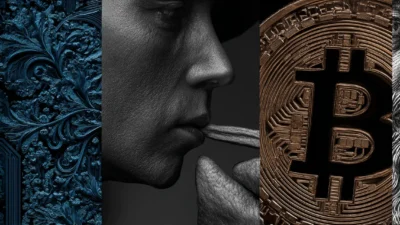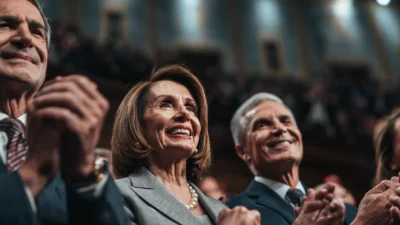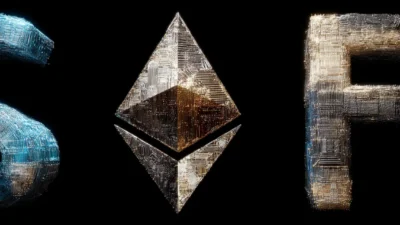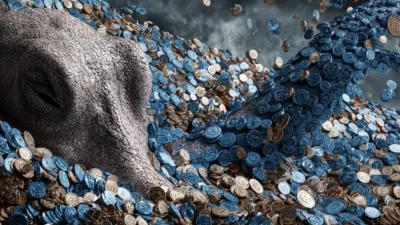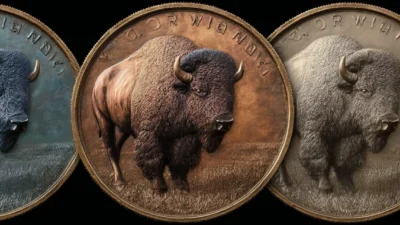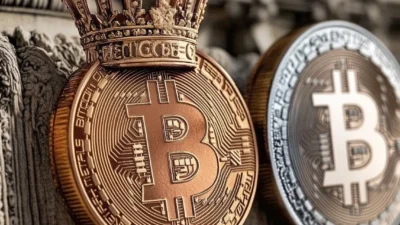- The Fed is holding rates at its current position.
- Powell anticipates two cuts in 2025.
- President Trump made crypto history again this week by being the first sitting president to address a crypto conference.
The Federal Reserve announced this week that it is keeping interest rates steady at the target range of 4.25% to 4.5%. While this decision might sound like nothing new, we’re going to start peeling this onion. There’s always something that crypto users can take away from any FOMC news.
Chair Jerome Powell dropped some breadcrumbs during his press conference, and crypto users should pay attention if they want to stay ahead of the game. Let’s get after it.
Doing Nothing Is Doing Something
The Federal Reserve is holding steady — for now. Policymakers decided not to shift interest rates, maintaining the current target range of 4.25% to 4.5%. But don’t mistake this for complacency. Powell confirmed that the Fed still forecasts two rate cuts coming in 2025.
Now, while a lot of mainstream economists are raising their bets on a recession creeping closer, Powell doesn’t think a severe downturn is on the horizon.
However, he did acknowledge the challenges posed by the Fed’s updated economic projections, which forecast higher inflation and slower economic growth over the next couple of years.
Confusing? *shrug*
That’s economics for you.
Inflation’s Persistent Shadow
A big chunk of the Fed’s revised inflation forecast stems from tariffs. Powell was clear that tariffs continue to have a ripple effect on the economy, nudging inflation higher. That puts everyone, including crypto markets, on alert. Why? Inflation tends to change how people allocate their money and assets. “Tends” is the keyword there.
Even though Powell insists the pain won’t lead to a large-scale crash, the Fed hasn’t painted an overly optimistic picture either. With economic growth projected to slow, many investors are reassessing their strategies — with some looking toward crypto as an inflation hedge.
The Stock Market’s Reaction
While Powell spoke at the podium, the stock market surged to the highs of the day (classic “meh-news-is-good-news” moment for equities).
But here’s the million-dollar question for crypto enthusiasts: What do steady interest rates and these economic forecasts mean for digital assets like Bitcoin, Ethereum, and stablecoins?
We don’t know. That’s the unfortunate answer. And also the honest one. Anyone who tells you they know exactly how the crypto market will react to any given situation is full of it.
It depends on how the broader market interprets the relationship between inflation, monetary policy, and risk assets. And there are probably another half a dozen factors we didn’t mention.
In related news…
Meanwhile, Trump Talks Crypto Takeover
While all eyes were on Powell and the Fed, President Trump made history once again.
Speaking at the Digital Assets Summit to a packed audience of crypto founders and executives, Trump doubled down on his vision to make America the global Bitcoin and crypto capital.
President Trump blames Biden for ‘crypto war’
The highlights:
- A Strategic Bitcoin Reserve – Trump mentioned his executive order to establish a national strategic reserve for Bitcoin and other cryptocurrencies. The government officially holding digital assets is the beginning of a growing institutional acceptance of crypto as part of the U.S.’s financial ecosystem.
- Smashing Operation Choke Point 2.0 – Trump came out swinging against prior regulatory actions dubbed “Operation Choke Point 2.0” by the industry. If you’re unfamiliar, this term refers to actions that cut off crypto businesses’ access to the banking system.
- Stablecoin Legislation & Market Structure Rules – Calling for “simple, common-sense” rules, Trump wants Congress to create legislation ensuring clarity in the world of stablecoins and other digital asset regulations.
First Sitting US President to Speak at a Crypto Conference
If you’re feeling some déjà vu, it’s because Trump previously addressed the crypto community during his campaign.
But this is the first time a sitting president has directly engaged with the industry at a major crypto event. It’s certainly stirring conversations about how politics and crypto will intersect further. For now, though, the stage has been set for ongoing government-crypto collaborations.
What Does It All Mean for Crypto Users?
Between Powell and Trump, there’s a lot to unpack here. But as a new crypto user or investor, here are the key takeaways:
- Interest Rates and Bitcoin’s Relationship – Steady rates are generally a neutral-to-positive sign for Bitcoin and the broader crypto market. If inflation pressures continue to rise, Bitcoin’s reputation as “digital gold” could strengthen, attracting investors looking to hedge against inflation.
- Federal Reserve Caution – The Fed’s mixed forecast of higher inflation and slower growth may lead to shifting investor risk appetites. Crypto, often viewed as an alternative asset class, could benefit as investors seek diversification.
- Regulatory Winds Shifting – Trump wants a more crypto-friendly regulatory environment. So far, he’s getting it. If policies around stablecoins and blockchain-based payment systems continue to deliver more and more clarification, they could pave the way for mass adoption and innovation.
- Trump’s Bitcoin Reserve as a Confidence Signal – The concept of a U.S. strategic Bitcoin reserve is a major vote of confidence in the future of crypto.
How Should Users Prepare?
Retail investors have plenty to consider with the Fed signaling long-term caution and Trump rallying behind crypto.
For starters, keep an eye on inflation numbers, interest rate policies, and any legislative movement regarding stablecoins or Bitcoin reserves. These factors can heavily influence market trends.
New to crypto? Now might be a good time to consider diversifying your portfolio with alternative assets like Bitcoin, Ethereum, or even stablecoins. Just make sure to research thoroughly and stay aware of emerging policies that could impact the market.
Likewise, stay nimble. The evolving relationship between governments, central banks, and crypto will shape the landscape in unpredictable ways.




